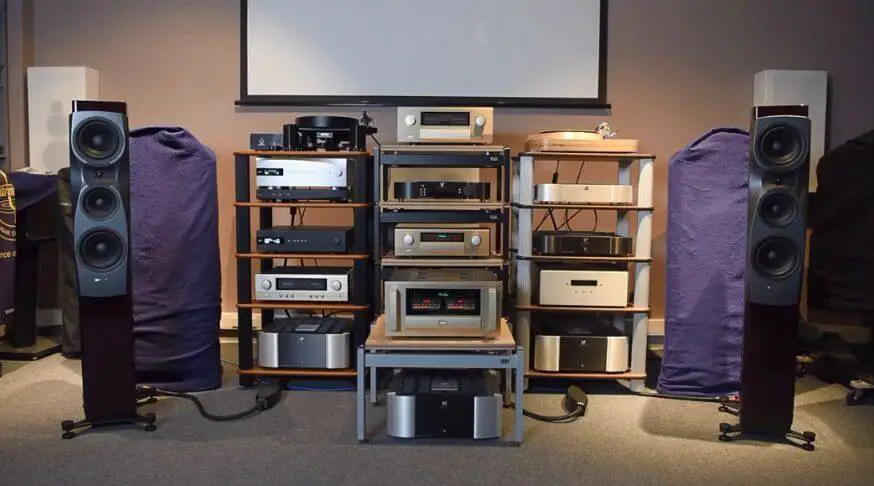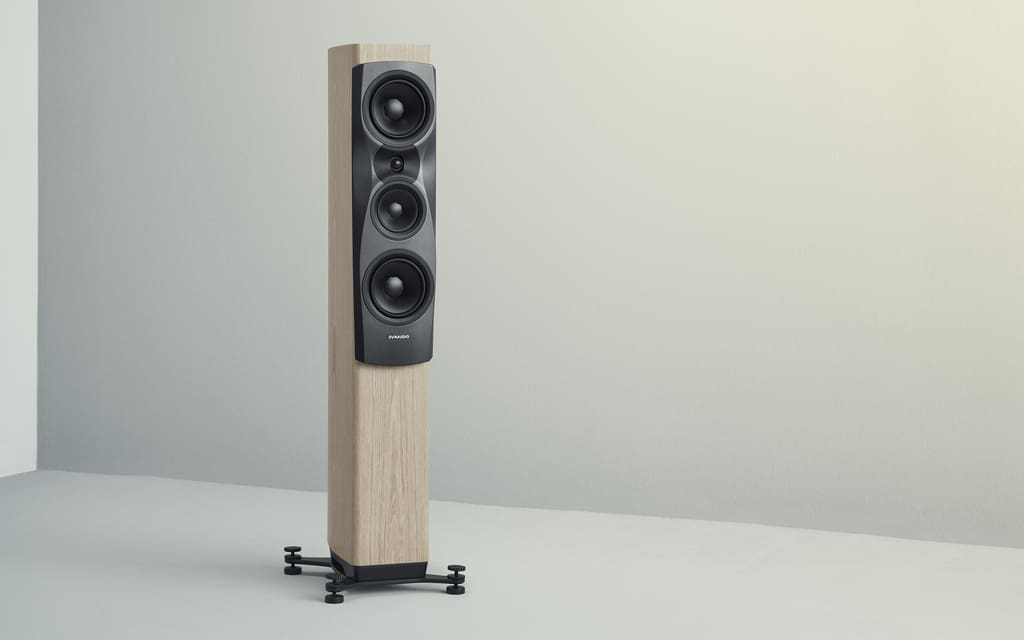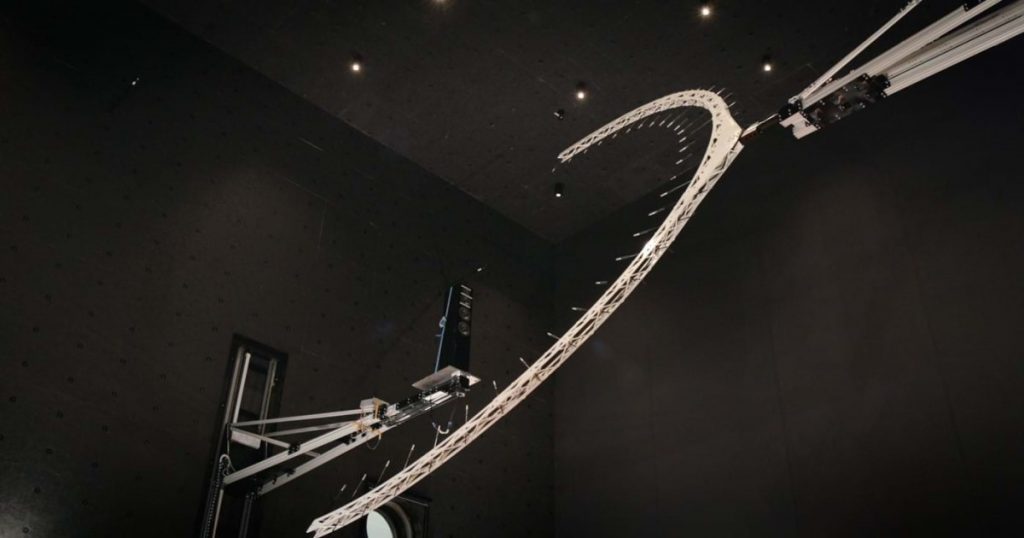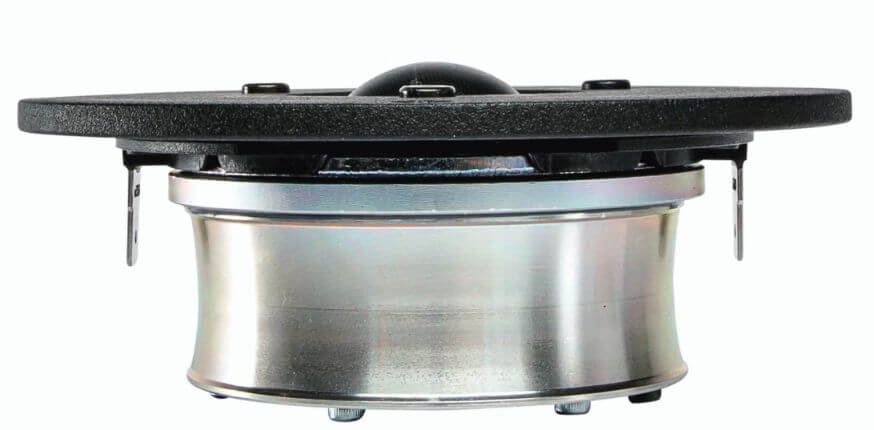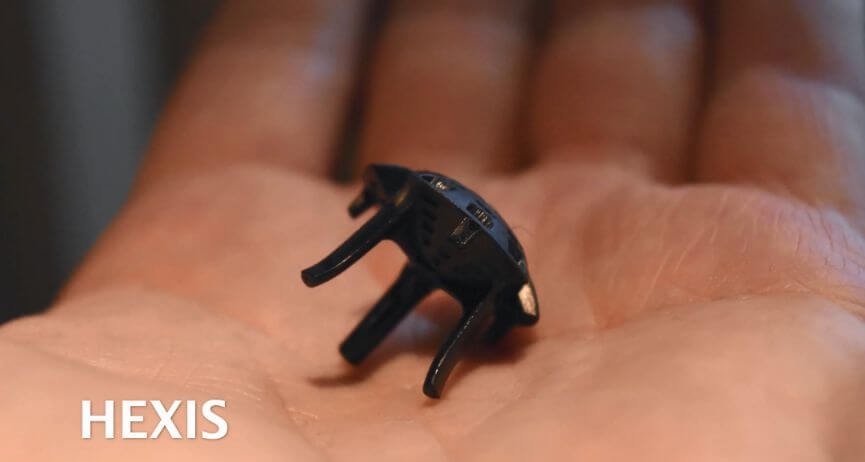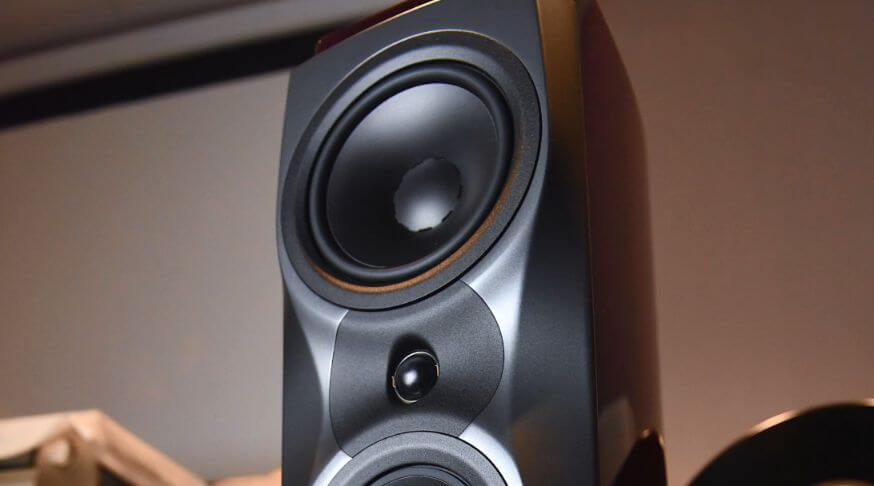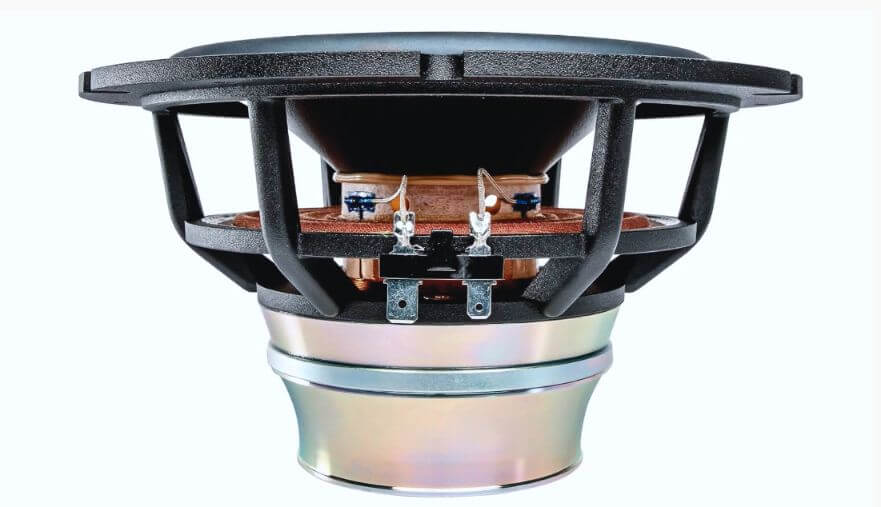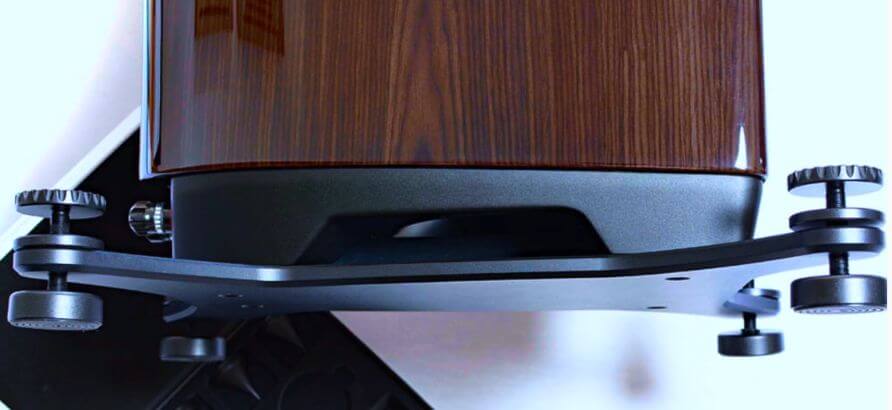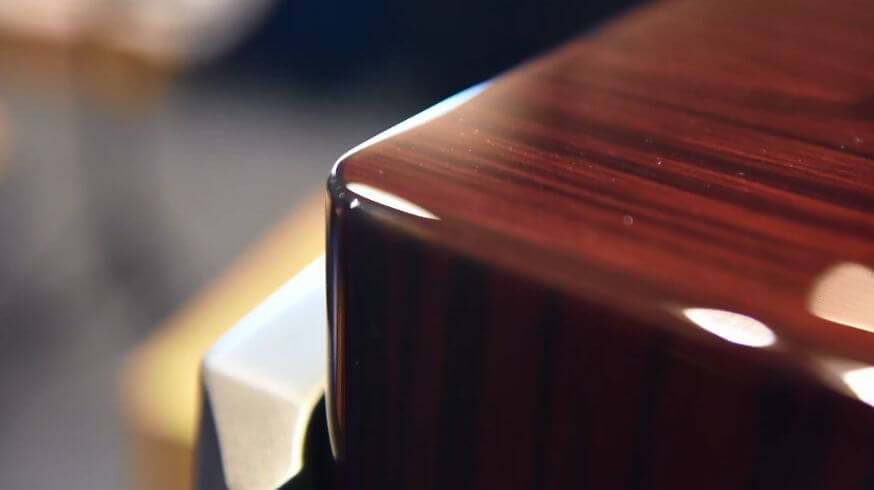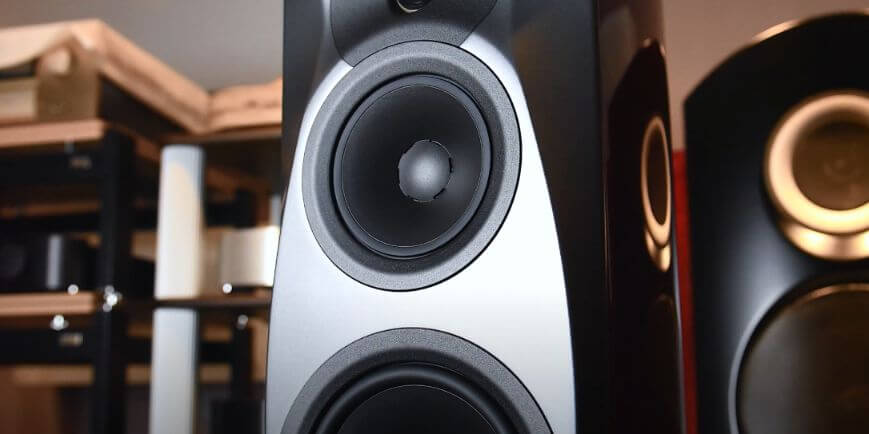Dynaudio Confidence 30 Review
The new Confidence series is currently Dynaudio’s flagship series. It was officially announced at the Munich Audio Show in the year 2019. Although it has the same name as the previous Confidence, its appearance, and internal design are quite different.
There are three floor-standing speakers in the series, namely Confidence 60, 50, and 30, and one bookshelf speaker is Confidence 20. The Confidence 30 of the floor-standing speakers I will review this time, despite its small size, still uses all the latest materials, units, and technical designs.
The Jupiter Acoustic Measurement System
In recent years, Dynaudio’s new products, whether it is the flagship Confidence, the new Contour, Evoke, or even the most basic Music series, are all designed with the Jupiter Acoustic Measurement system set up in Denmark in 2016. The acoustic space is 13 meters in length, width, and height. It is only used for equipment measurement to adjust the design according to the measurement results. There is a semicircular steel frame with a diameter of about 6 to 7 meters, with 31 microphones built-in, and a robotic arm can control the steel frame to rotate it 180 degrees.
During the measurement, the speaker is raised to the center of the space using the lifting platform, and the 31 microphones collect the sound waves. During the measurement, the semicircular steel frame can be rotated according to the required angle to collect sound information without dead corners around the speaker.
The ample space can delay the recording time of reflected sound, making it easier to separate direct and spatial reflection sound during the analysis. Besides, the interior is not built into a silent room. Only appropriate sound-absorbing materials are used on the wall to make the reflected sound close to the general home state, which is more in line with the actual use situation.
The new Confidence is the flagship series of speakers built with the help of the Jupiter Acoustic Measurement system.
Design
The New Soft Dome Tweeter
The tweeter of the new Confidence is called Esotar3. It uses a silk soft hemispherical diaphragm as before. Because this is the diaphragm material that Dynaudio thinks is the most natural sound, it does not change from the outside, but it is very different inside the new tweeter. The changes also directly affect the design of the front baffle, crossover, and DDC Lens.
Esotar3 is the evolution of Esotar2. The latter is used in Contour and the previous generation of Confidence. Esotar3 combines the airflow optimization technology used in the award-winning 40th-anniversary speakers to provide a large space rear chamber to reduce resonance and optimize damping. And use a powerful neodymium magnet as the drive system, which significantly improves the sensitivity and control.
In the new Confidence series, only one tweeter is used instead of two tweeters in the past. Therefore, it is more straightforward in the crossover circuit and consumes less energy. With the modification of the magnet, the efficiency of Esotar3 is significantly increased compared with Esotar2.
Esotar3 also has a new change, adding a design called Hexis, made of composite materials and placed very close to the soft hemispheric diaphragm’s back. There are many well-designed small holes on Hexis. The role of Hexis is to eliminate the resonance generated inside the unit when the diaphragm is working, and the opening can disperse and eliminate the standing wave in the back cavity to prevent affecting the operation of the diaphragm.
The New DDC Lens
Dynaudio developed the DDC (Dynaudio Directivity Control). In most listening spaces, acoustic treatment items are used on the walls, and there are even soft items that can absorb sounds, such as curtains and carpets. The ceiling is the most difficult to adjust. In fact, in most spaces, the ceiling is closer to the speaker than the sidewall, but it cannot solve excessive reflection. Dynaudio noticed this situation and developed the first-generation DDC.
Through the two tweeters’ crossover design, an inverted sound wave is generated to offset each other between the ceiling and the floor, eliminating 75% of the reflected sound from the ceiling and floor. That is also why Confidence and other series of floor-standing speakers used two tweeters in the past, not because of insufficient unit power, but to achieve the DDC effect.
Based on the original DDC design, the new second-generation DDC can reach the same result but only requires a tweeter and a more straightforward crossover, plus a new Compex front baffle to achieve the same guided wave effect. DDC also cooperates well with the midrange unit. In addition to controlling the upper and lower reflections, it also increases the horizontal sound wave diffusion. A broader range of listening positions can have excellent sound effects.
Around the tweeter diaphragm in the center of the photo is an aluminum frame fixed with the tweeter and the surrounding grey Compex composite front baffle. The mid-range and tweeter units are also only fixed to the front baffle. They do not directly contact the cabinet, which reduces mutual resonance between the unit and the cabinet.
The Woofer
Confidence uses a new long-stroke woofer. The pure neodymium magnet drive system provides more muscular energy. The design team believes that different units’ voice coils should have different designs due to different frequencies. Confidence 30 uses a copper wire voice coil, and the powerful current of the neodymium magnet is sufficient to control the copper wire voice coil while reducing the weight of the voice coil. The overall driving power is maintained at a high standard, and the air gap and ventilation and heat dissipation capabilities are maintained.
The diaphragm is still using the MSP diaphragm developed by Dynaudio. In the style of floor standing speakers, the diaphragm will be slightly thicker to provide higher rigidity. The design team uses a higher driving force to increase the sense of energy and maintain the consistent response speed of Dynaudio.
The midrange unit’s most significant feature is the diaphragm change and the overhang, which perfectly fits the front baffle. The unit’s overhang is not convex or concave, but the straight angle is aligned with the front baffle, allowing the sound wave to spread even more. And will not produce sound wave refraction or resonance due to the overhanging edge, spread the sound wave along with the extension of the front baffle, and perfectly match the newly designed tweeter and front baffle.
Other Design Features
The Compex composite material used in the front baffle can provide outstanding rigidity and damping, and there is no resonance when tapping the front baffle with your fingers. Besides, the front baffle shoulders the task of fixing the unit and avoids mutual influence between different units or the cabinet. More importantly, the front baffle is a vital part of the new generation of DDC Lens. Compex materials are easy to process and can produce the angles and curves required in the DDC Lens design without changes due to time.
Confidence’s bass-reflex hole is not only a simple channel but is designed after precise measurement, which will guide low-frequency energy to both sides of the speaker. The design of each bass reflex hole is different—all tailor-made. You can see that the speaker’s bass-reflex hole on the side is not directly below the speaker and then touches the floor.
There is also a speaker bottom plate under the reflex hole. The bass reflection energy will first contact the speaker’s bottom plate and then be directed to both sides. It will directly touch the floor, so users don’t have to worry about different floor materials causing different sound effects.
The speaker binding post is made of German WBT, and the speaker information and manufacturer information are written around. Confidence 30 is made locally in Denmark, with an impedance of 4 ohms and a continuous power of 350 watts.
Sound Performance
Dynaudio speakers’ accuracy has always been quite good, and it still maintains this feature on Confidence 30. Compared to listening to Dynaudio speakers in the past, there is a bit more natural diffusion. After listening to the newly designed Dynaudio Confidence several times, the diffusion is better than before.
Confidence 30 presents a particularly natural and supple feeling of denseness in strings and high-frequency bands, which is also a characteristic of silk tweeters. It also appears solid in the bottom of the sound, and the mid-range is complete and does not expand. The sound field is wide under the big scene, and the extensibility of the scene on the left and right sides is also quite good.
Listen to the familiar “2015 The Perfect Sound”. The vocals in the first song sung by Jacky Cheung are very moving and full of emotion, and the resolution and details of the music itself are clear and rich. The interpretation of the song is quite deep and clear. The low frequency of the opening cello in the twelfth song, “What A Wonderful World,” played by Tsuyoshi Yamamoto Trio, is quite natural and real. It is necessary to keep the cello’s shape when walking back and forth between the low frequencies. Definiteness and volume consistency are not easy things.
Listen to another piece of “Nameless” sung by Dominique Fils-Aime. Her voice is slightly sexy, and her style may not quickly become mainstream, but it should be entirely in line with audiophiles’ tastes. Besides, the recording and production of this album are also relatively good. The style that audio fans love, it is easy to hear the advantages of this album on a piece of slightly level equipment. Everything is presented very naturally, rich in warmth and thickness, and the diffusion allows the sound to fill. The entire space still maintains clarity and detail.
Playing the original soundtrack of the movie “The Lion King” actually contains extraordinary music. I found that through Confidence 30, I always feel that the fever of this CD has increased again. The hustle and bustle of the African tribal wind, coupled with the poignant orchestral music, can make a big explosion in the album’s later tracks. Confidence 30 combines this orchestral music. The sense of layering is extremely clear.
Conclusion
Confidence 30 is a 3-way, 4-driver, including a unique combination of two 18cm woofers up and down, a 15cm midrange, and a 28mm Esotar3 tweeter in the center. As for Confidence 50, it is equipped with two midranges, two basses, and one treble. It presents a standard MTM arrangement. The impact, level, and detail of the low frequency that Confidence 30 gave me have promoted the enjoyment of low frequency to a new dimension!
Dynaudio Confidence 30 Specifications
- Sensitivity: 88dB (2.83V / 1m)
- IEC power handling: 350W
- Impedance: 4 Ω (Minimum 2.8 Ω @ 85Hz)
- Frequency response (± 3 dB): 38Hz–22kHz
- Box Principle: Bass reflex down-firing port
- Crossover: 3 way
- Crossover frequency: 290, 3700Hz
- Crossover topology: 2nd/3rd order with DDC
- Woofer: 2×18 cm MSP
- Midrange: 15 cm MSP
- Tweeter: 28 mm Esotar3
- Specification sheet for Confidence part 1
- Weight:: 44.2 kg / 97.4 lbs
- Dimensions (W x H x D):: 222 x 1337 x 399 mm / 8 47/64 x 52 41/64 x 15 45/64 Inches
- Dimensions with feet/grille (W x H x D): 364 x 1382 x 424 mm / 14 21/64 x 54 13/32 x 16 11/16 Inches
